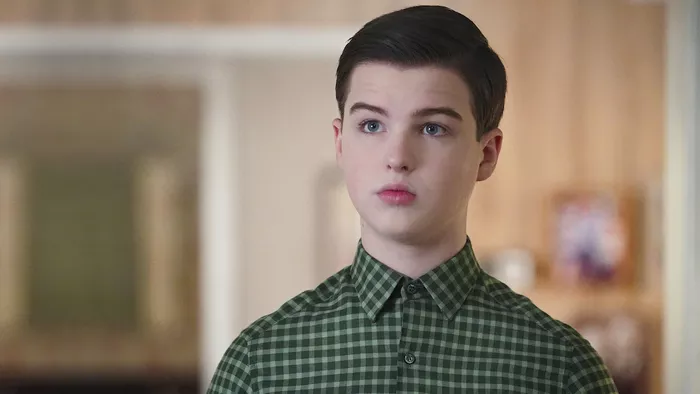The intriguing dynamics of Sheldon Cooper’s character portrayal in both “The Big Bang Theory” (TBBT) and “Young Sheldon” have sparked discussions among fans and critics alike, shedding light on the subtle nuances of his social ineptitude and, notably, his tendency to make sexist remarks. As viewers delve into the profound contrasts between Young Sheldon’s approach to female characters and the characterization of Sheldon in TBBT, hints emerge that suggest the potential influence of his main group in TBBT, shedding light on the complex interplay of character development and the evolving dynamics of social influence within the narrative tapestry of both shows.
I. Sheldon’s Social Ineptitude: Exploring TBBT’s Portrayal
A. Sexist Remarks and Social Dynamics
In “The Big Bang Theory,” Sheldon’s character portrayal often intersects with instances of social ineptitude that manifest in his tendency to make sexist remarks, particularly towards his female friends and acquaintances. Through the lens of his interactions with female characters, the nuanced complexities of his social dynamics come to the fore, underscoring the intricacies of his character development and the underlying influences that shape his perceptions and attitudes towards women within the confines of his social circle.
B. Contrasts in Character Treatment
The stark contrasts in Sheldon’s treatment of female characters between “Young Sheldon” and TBBT serve as a compelling point of analysis, highlighting the distinct approaches to character development and narrative dynamics that underscore the evolution of Sheldon’s portrayal across both shows. With the exploration of his interactions with female characters as equals in “Young Sheldon,” the narrative juxtaposes the contrasting elements of his character’s social dynamics, inviting viewers to consider the potential influences that shape his attitudes and behavior within the context of his main group’s dynamics in TBBT.
II. Insights from “Young Sheldon”: A Nuanced Exploration
A. Equal Treatment of Female Characters
“Young Sheldon’s” portrayal of Sheldon’s interactions with female characters underscores a nuanced approach that emphasizes the equitable treatment of female teachers and friends, mirroring his approach to male counterparts within the narrative. By showcasing his respectful and equitable treatment of female characters, the show’s narrative offers insights into the formative influences that shape his character development and social interactions, prompting viewers to consider the potential influence of external factors on his perceptions and attitudes towards women.
B. Implications of Social Influence and Group Dynamics
The contrasting dynamics of Sheldon’s character treatment between “Young Sheldon” and TBBT prompt an exploration of the potential implications of social influence and group dynamics on his attitudes and behavior towards women. As the narrative unfolds, subtle hints emerge, suggesting the potential influence of his main group’s dynamics in TBBT on the development of his social ineptitude and the manifestation of sexist remarks, shedding light on the complexities of character development and the interplay of external influences within the context of his social circle and evolving relationships.
III. Unraveling the Influence of TBBT’s Main Group Dynamics
A. Exploring the Influence of Peer Interactions
The examination of Sheldon’s character flaws in “The Big Bang Theory” prompts a deeper exploration of the potential influence of his main group’s dynamics on the development of his social ineptitude and the manifestation of sexist remarks within the narrative. As viewers dissect the intricate layers of his interactions with his main group, subtle clues emerge, underscoring the potential impact of peer interactions and group dynamics on the shaping of his perceptions and attitudes towards women, emphasizing the intricate interplay of social influences and interpersonal relationships within the context of TBBT’s narrative landscape.
B. Intersecting Influences and Character Development
The intersection of external influences and character development within the context of TBBT’s main group dynamics serves as a focal point for analyzing the evolution of Sheldon’s character portrayal and the manifestation of his social ineptitude. With the examination of his interactions with his main group members, the narrative unveils the subtle nuances of social influence and the complexities of interpersonal dynamics, shedding light on the interconnected nature of character development and the underlying influences that shape his attitudes and behavior towards women within the confines of his social circle.
Conclusion
The intriguing portrayal of Sheldon’s character flaws in “The Big Bang Theory” and “Young Sheldon” offers a compelling glimpse into the subtle nuances of his social ineptitude and the manifestation of sexist remarks within the context of his main group dynamics. With the exploration of his treatment of female characters across both shows, hints emerge that underscore the potential influence of his main group’s dynamics on the development of his attitudes and behavior towards women, inviting viewers to consider the complexities of social influence and interpersonal dynamics within the narrative tapestry of both shows. As the legacy of Sheldon Cooper endures, the nuanced exploration of his character flaws serves as a testament to the intricate interplay of external influences and character development that define his journey within the captivating realms of “The Big Bang Theory” and “Young Sheldon.”

